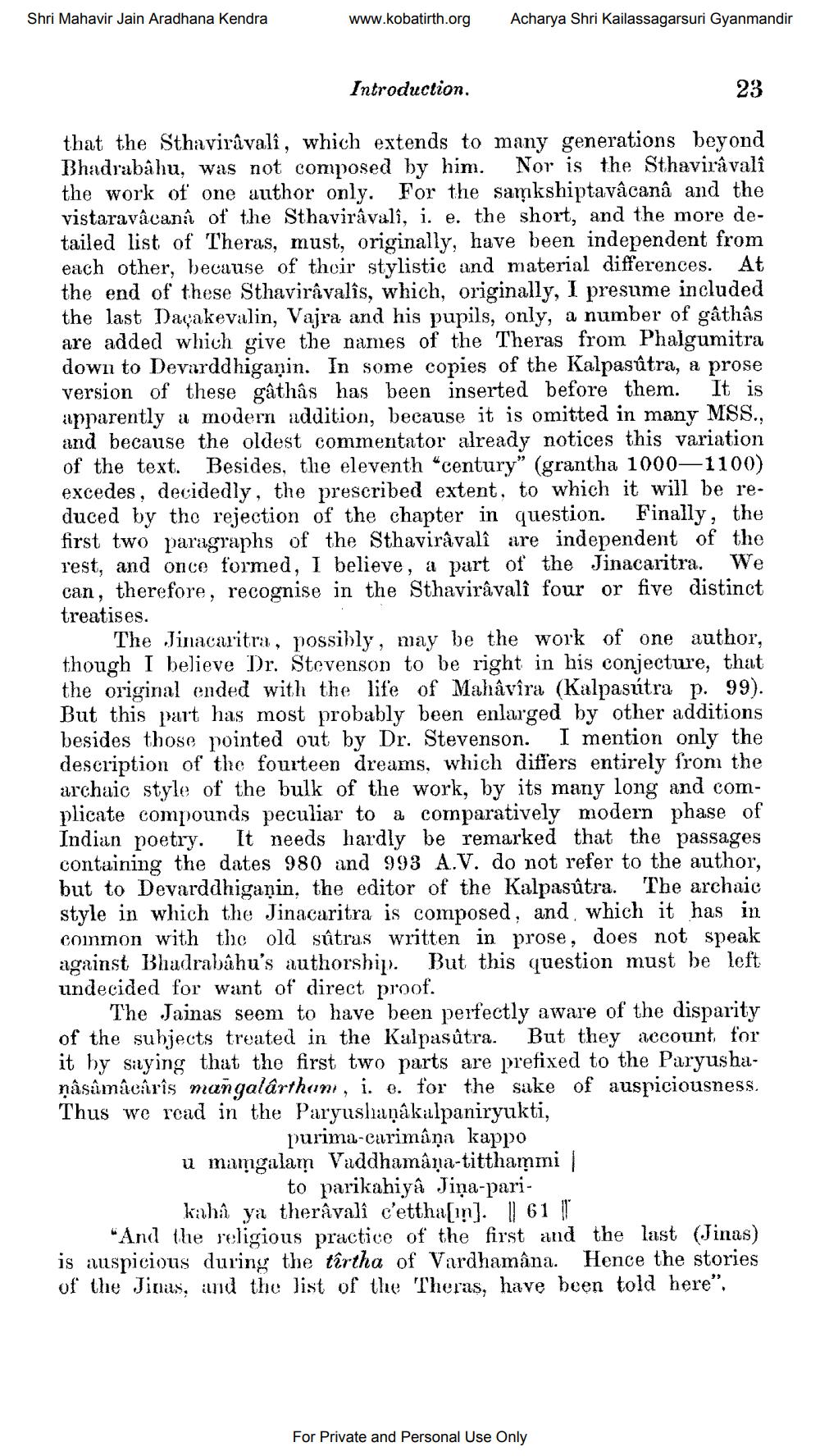________________
Shri Mahavir Jain Aradhana Kendra
www.kobatirth.org
Acharya Shri Kailassagarsuri Gyanmandir
Introduction.
23
that the Sthavirâvali, which extends to many generations beyond Bhadrabahu, was not composed by him. Nor is the Sthaviravali the work of one author only. For the samkshiptavâcanâ and the vistaravacanâ of the Sthavirâvali, i. e. the short, and the more detailed list of Theras, must, originally, have been independent from each other, because of their stylistic and material differences. At the end of these Sthavirâvalis, which, originally, I presume included the last Dacakevalin, Vajra and his pupils, only, a number of gâthâs are added which give the names of the Theras from Phalgumitra down to Devarddhiganin. In some copies of the Kalpasútra, a prose version of these gâthâs has been inserted before them. It is ipparently a modern addition, because it is omitted in many MSS., and because the oldest commentator already notices this variation of the text. Besides, the eleventh "century" (grantha 1000-1100) excedes, decidedly, the prescribed extent, to which it will be reduced by the rejection of the chapter in question. Finally, the first two paragraphs of the Sthavirâvalî are independent of the rest, and once formed, I believe, a part of the Jinacaritra. We can, therefore, recognise in the Sthavirâvali four or five distinct treatises.
The Jinacaritra, possibly, may be the work of one author, though I believe Dr. Stevenson to be right in his conjecture, that the original ended with the life of Mahâvîra (Kalpasútra p. 99). But this part has most probably been enlarged by other additions besides those pointed out by Dr. Stevenson. I mention only the description of the fourteen dreams, which differs entirely from the archaic style of the bulk of the work, by its many long and complicate compounds peculiar to a comparatively modern phase of Indian poetry. It needs hardly be remarked that the passages containing the dates 980 and 993 A.V. do not refer to the author, but to Devarddhigaņin, the editor of the Kalpasûtra. The archaic style in which the Jinacaritra is composed, and which it has in common with the old sûtras written in prose, does not speak against Bhadrabahu's authorship. But this question must be left undecided for want of direct proof.
The Jainas seem to have been perfectly aware of the disparity of the subjects treated in the Kalpasútra. But they account for it hy saying that the first two parts are prefixed to the Paryushanâsâmâcârîs mangalârthuni, i. e. for the sake of auspiciousness. Thus we read in the Paryushaņâkulpaniryukti,
purima-carimâiņa kappo u mamgalam Vaddhamâna-titthammi
to parikahiya Jiņa-parikahî ya therâvalî c'ettha[ın). 11 61 ľ And the religious practice of the first and the last (Jinas) is auspicious during the tirtha of Vardhamâna. Hence the stories of the Jinas, and the list of the Theras, have been told here".
For Private and Personal Use Only




